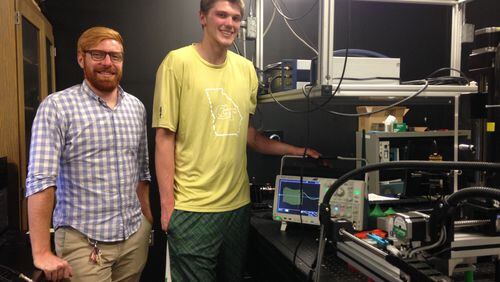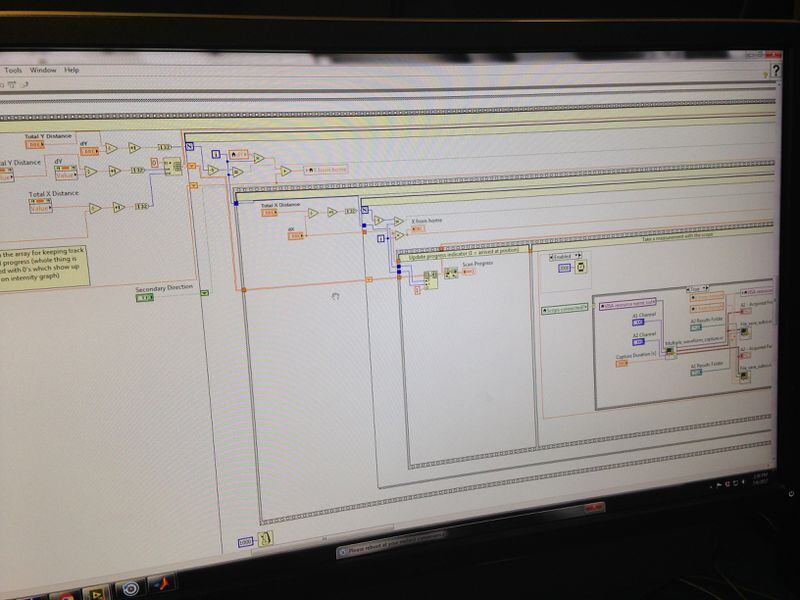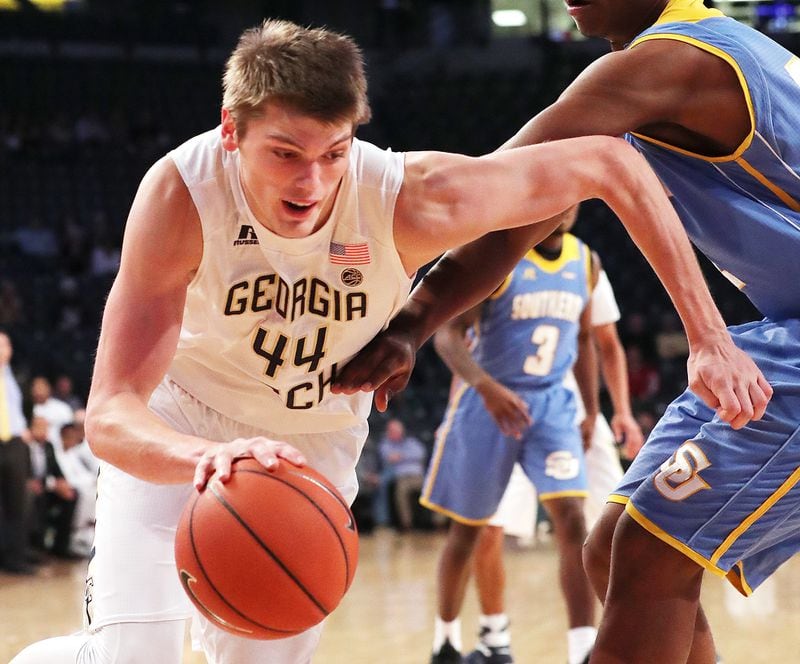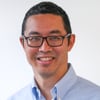The expanse of his 6-foot-10 frame aside, Ben Lammers fits comfortably in Room 2132 of the Mason Building on the Georgia Tech campus, otherwise known as the Non-Destructive Evaluation Laboratory.
Tech’s All-ACC center and mechanical-engineering major has spent dozens of hours there this summer, the recipient of a prized undergraduate research internship. His head encased by earphones, Lammers sits hunched over his laptop and taps out computer code, his primary contribution to cutting-edge research being performed in the school's world-renowned engineering department. The ACC’s reigning defensive player of the year laughs ruefully about the seemingly arbitrary bugs that pop up in coding. He refers to a string potentiometer, a small device that measures the micro-millimeter movements of a contraption that fires ultrasonic waves and lasers, as “this guy.”
“I just have to point him in a direction and he can take care of it,” said David Torello, a newly-minted Tech Ph.D whose research Lammers has supported. “He enjoys the part where you get to program something through a computer interface and watch it actually have some sort of result. He’s really taken to it naturally.”
Lammers has similarly gained familiarity with a section of a campus laboratory of another sort, namely the area of the Zelnak Basketball Center practice court outside the 3-point arc. In sessions often conducted late at night, Lammers has been hoisting hundreds of 3-pointers to add what would be a most useful tool to his kit.
After a season in which he established himself as one of the premier post players in the country while grinding through thermodynamics and multi-variable calculus, Lammers has labored this summer to finish his college career with a flourish. Besides the 3-point shot, Lammers has dedicated himself to finishing at the basket through contact and improving his quickness in multiple jumps.
"It feels pretty good," Lammers said of the 3-pointer. "It is kind of interesting because I've shot 3's before, but at a different volume. It's kind of interesting because it's almost like a different type of conditioning for my arms."
Lammers has worked in the lab two to three times a week, about two hours per shift. The research, part of Torello’s dissertation, seeks to test materials' integrity through the use of ultrasonic waves. The work has far-reaching applications. Jet engines, bridges or buildings could be scanned for structural fatigue with instruments developed through Torello's research.
“The idea is they can tell when something is close to breaking before you can actually even see anything, even with a microscope,” Lammers said.
In the research, Torello has shot lasers and ultrasonic waves against different materials, such as metal blocks, measuring acoustic distortion on an oscilloscope. The centerpiece of the research is a platform that is about 9 square feet and was custom-made in Korea at a cost of about $20,000. The platform holds and maneuvers the materials and an actuator, a device that releases the ultrasonic waves. Precision is required; the actuator and the sample blocks can be adjusted by a distance about the thickness of a piece of paper.
Lammers' role in the research has been programming the platform to move the test material and the actuator and also to ensure that they are being shifted, for instance, .05 millimeters and not .06 millimeters.
“So over awhile, even if it’s a small error, it builds up to being two or three millimeters off, which in this kind of thing, can really mess it up,” Lammers said.
The code, written in the programming language LabVIEW, is as complex as you might imagine, a series of flowcharts, sequences and loops.
“Ben had a tall order when he basically had to take this (code) and figure out what it does, but then we came up with another test algorithm to write, and he did it and it worked perfectly,” Torello said.
The experience has been valuable. He has been working in a laboratory with equipment that altogether costs several hundred thousand dollars. One of Lammers' predecessors who assisted Torello as an undergraduate intern is now pursuing a Ph.D at MIT. (It's Nick Selby, he of the "You're at Georgia Tech – you can do that” speech.)
He’s not working with lightweights. Tech is a leader in the field of non-destructive evaluation, particularly in the realm of the use of ultrasound as a measurement tool.
Said Torello, “That’s where we kick (butt) and take names.”
Lammers has made an impression with his work.
“Let me just say I’m blown away,” said Larry Jacobs, the interim dean of the college of engineering, who has mentored Lammers since he enrolled at Tech and has overseen Torello's research.
Another counselor in Lammers’ life, assistant coach Eric Reveno, isn’t quite as overwhelmed as Jacobs by his pupil’s summer work, but likes what he has seen. Reveno encouraged Lammers to take ownership of his offseason work, and the two have focused particularly on his scoring at the basket and beyond the arc. He said the analytical side of Lammers recognizes the value of the post work.
“His heart’s embracing shoot the 3," Reveno said.
Credit: ccompton@ajc.com
Credit: ccompton@ajc.com
Aside from the two hours weekly that Lammers can work with Reveno and other coaches, he has dedicated himself to solo shooting sessions to extend his range. Reveno sees him using the 3 as a trailer on fast breaks and out of the high post, where the offense runs through him. He wants Lammers shooting in the 40 percent range.
“He’s kind of a microcosm of the team, I guess,” Reveno said “He needs to finish better around the basket and shoot better 3’s.”
Even the threat of Lammers dropping 3-pointers should have an effect on the offense by spreading out the floor, as defenders will have to honor him if he steps out past the arc. He could choose to drive, shoot or find a cutter to the basket.
“Mostly, I get to be more of an all-around threat,” he said.
Like his lab work, the 3-pointer has intrigued him.
“It’s kind of interesting to do something that I’ve, again, had some experience with, but I’ve never really seriously worked on 3-pointers that much until recently,” he said. “So it is kind of interesting to do a whole new facet.”
Lammers' internship has opened the possibility of earning an author credit on an academic paper based on the research and has given him a sense of life as a Ph.D. student.
“It’s definitely interesting,” he said of the research. “I’ll definitely be considering it in the future.”
At the end of a summer shaped by parabolic arcs spun off his fingertips and ultrasonic waves measured on an oscilloscope, that future remains wide open.









